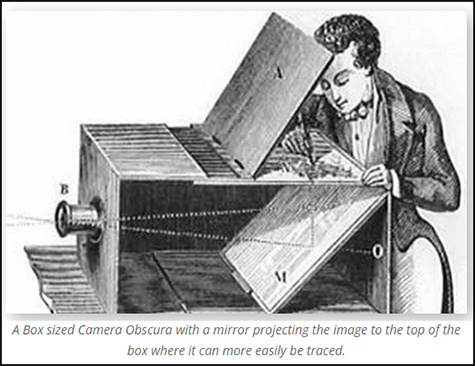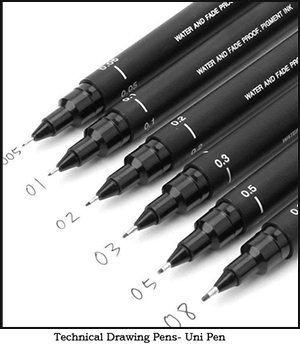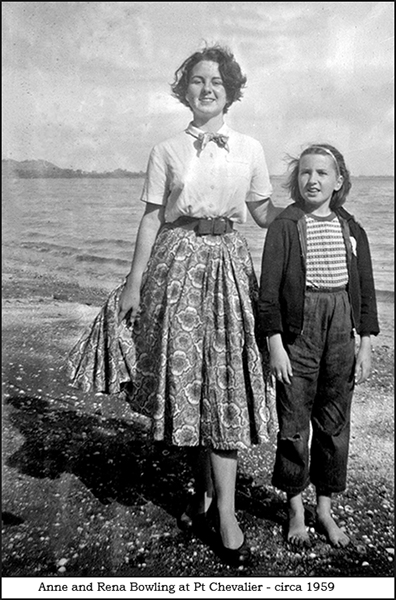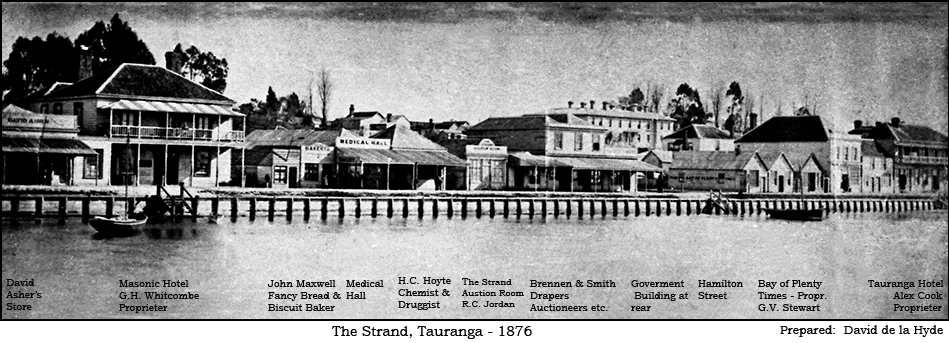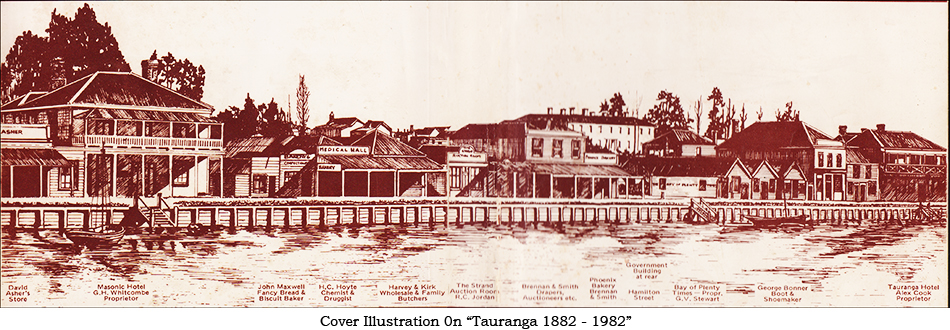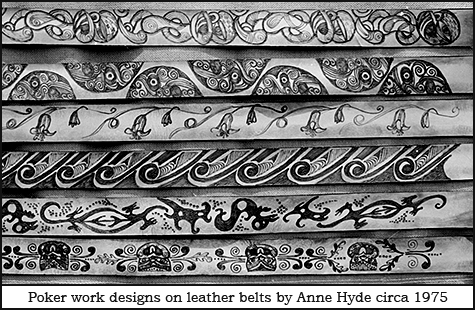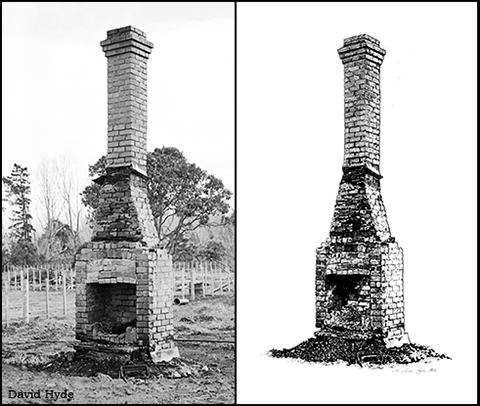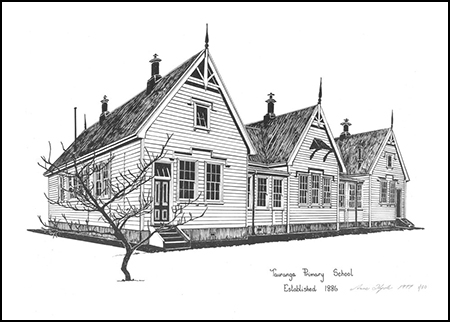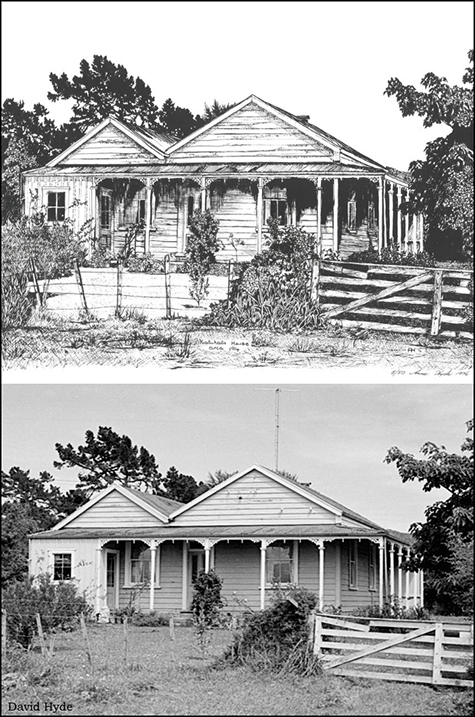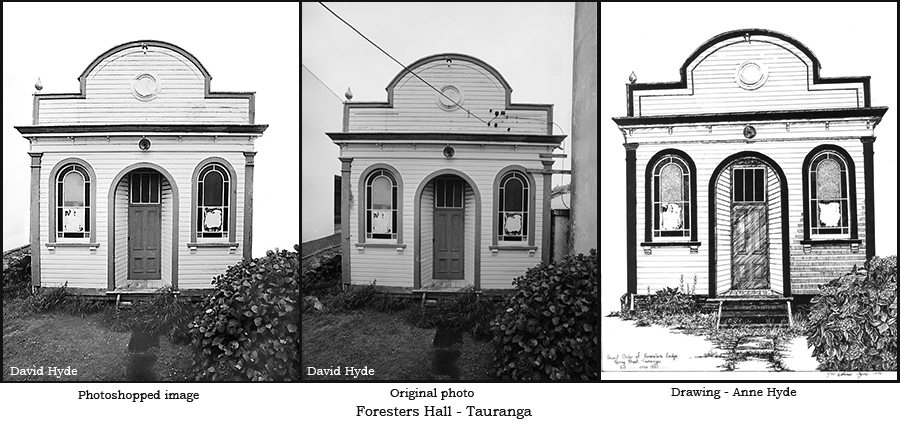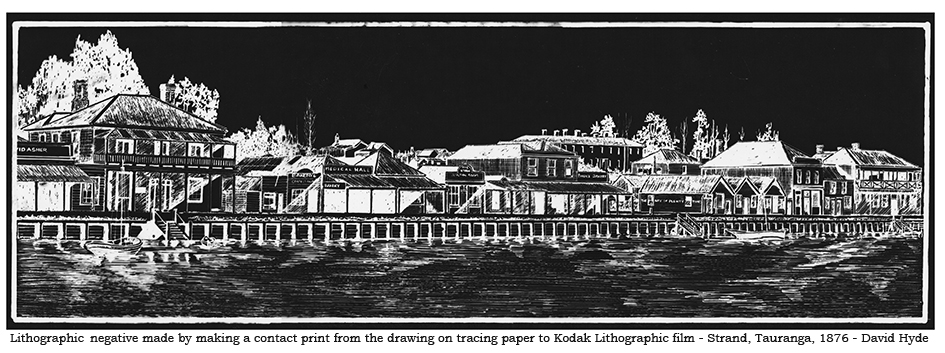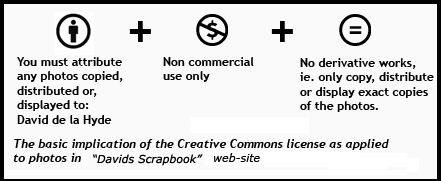RECORDING TAURANGA HISTORIC BUILDINGS
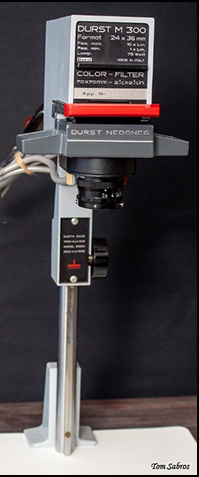
The image at the top of the page is a photo of a poor quality image (early days of photography) that was used as the basis of the drawing by Anne Hyde that appears on the front cover of the "Tauranga 1882 to 1982" Centenary Book.
In the top photo I copied the location text, that was in the image below, derived from the Centennial Book published in 1982.
To fit the book cover, a section of David Asher's Store in the original drawing is missing.
After I joined the Tauranga Electric Power Board as an Electrical Engineer towards the end of 1972 both Anne Hyde and myself became interested in recording old buildings in the general Tauranga district.
This interest was stimulated by a few books becoming available of sketches of colonial buildings in particular districts.
Based on my knowledge of producing printed circuit boards at work, and my general experience as an amateur photographer, I decided that a practicable approach would be:
1 . Take photos of suitable buildings.
2. Use my Durst M300 enlarger to make approximately 16"x20" prints or composite prints that could be traced over. The enlarger's head could be moved sideways so a degree of perspective correction could be made.
The Italian firm Durst ended production of their enlargers in late 2006 due to a drop in sales, probably due to growth of minilabs and later digital imaging.
3. Make up a drawing board that could rest on the arms of a lounge chair on which the photo or composite photo could be mounted. Then an A3 tracing paper overlay was placed on the photo images.
4. As Mrs. Anne Hyde (nee Bowling, 6 Sept. 1941 - 14 Mar. 2023) had a lot of experience utilising graphic designs for items to sell at craft markets (mainly poker work on wood or leather), she then drew on the tracing paper with technical drawing pens for a final design, using the photo/photos as the structural backbone design. She did it very well.
5. The tracing paper was then overlaid in the darkroom/laundry on to a lithographic sheet film and a contact negative produced after development. Large 16"x20" developing dishes were used.
6. After fixing, washing and drying, the contact negative could next be placed on sheets of photographic paper, and a print produced by the usual photo print processing methods.
Twenty three different prints were produced using the above methods, and a publisher was approached to see if they could be published. However the perspective publisher wanted about double the number of images over a wider area. At that stage we were both rather tired of the work involved and called it quits.
Footnote: By chance I found out on 1 Dec. 2023 that Anne died on 14 March 2023. I had no knowledge of her state of health and this web page was published a week before her death. My condolences to her immediate family and friends.
On the 1st of January 2002, I published a web page in a web site pertaining to the Tauranga Primary School, that in the third paragraph describes the method used in producing a drawing of the school as follows:
"The final drawing was done in association with Anne Hyde. A photographic montage made up - necessary because parts of the building was obscured by trees - perspective points drawn in, then a drawing made by Anne on a tracing overlay. Finally a lithographic contact negative was made and the result printed on to photographic paper."
www.delahyde.com/school/page/credit.htm
